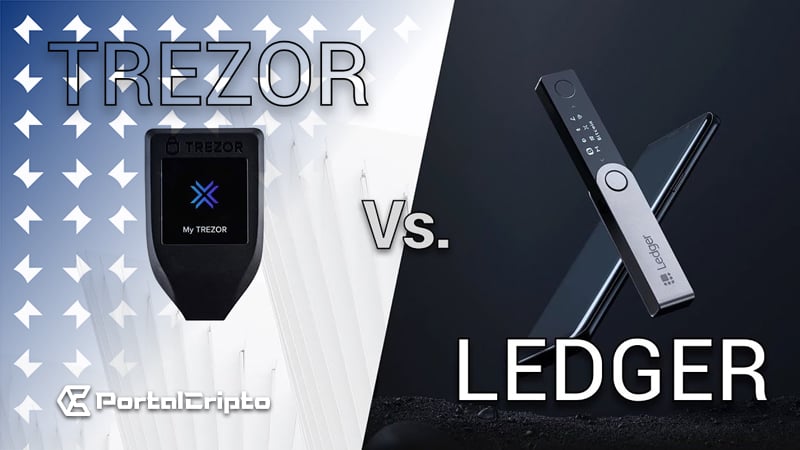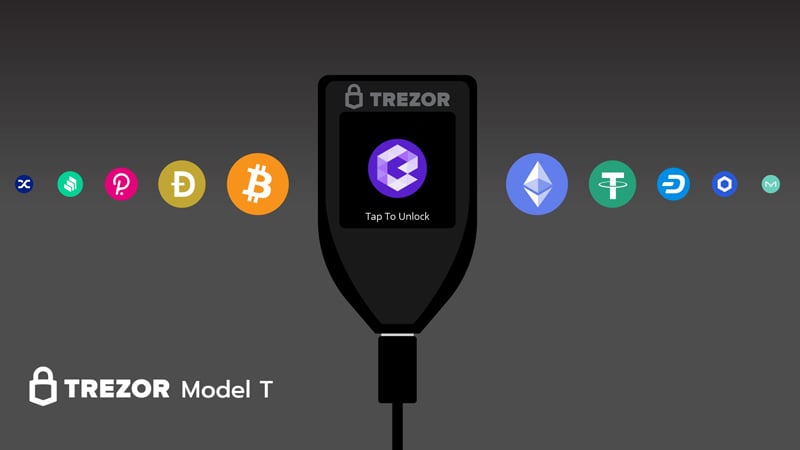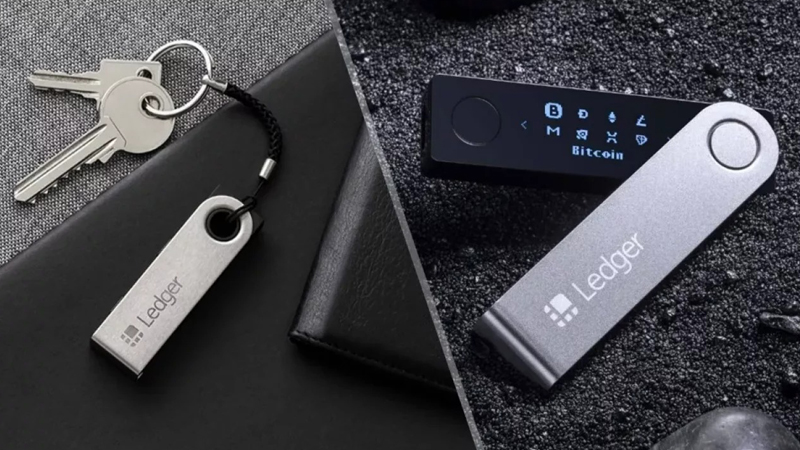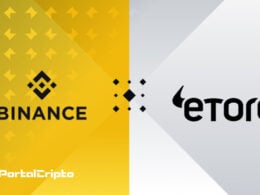Individuals venturing into the world of cryptocurrencies for the first time quickly come across alarming reports. These narratives are frequent and stand out in the journey of those seeking to understand the sector: they tell about hacked cryptocurrency exchanges and significant losses of investor capital; mention fraud and fraudulent schemes that embezzled many of their valuable crypto assets.
Centralized exchanges are particularly vulnerable and make attractive targets for cyberattacks. They concentrate a large volume of cryptoactives in a single location, appearing to be within the reach of individuals skilled enough to infiltrate without being detected.
However, security has advanced considerably in recent years, with learning from previous experiences and the community uniting around mutual protection. The most renowned exchanges now adopt robust security protocols, aiming to safeguard their customers' digital assets against intrusions.
Mechanisms such as cold storage, two-factor authentication, and Know Your Customer (KYC) procedures are standard practices. After all, no platform wants to face the fate of notorious cases like Mt. Gox or Bitfinex. In a highly competitive market, a stain on your security reputation can be devastating. In times of uncertainty, the emphasis on security is a critical and widely valued aspect.
In this article, we will discuss:
Together
However, placing trust exclusively in exchanges to guarantee security is insufficient. To effectively minimize the risks posed by hackers and their advanced tools, it is crucial that cryptocurrency users like us raise our protection standards.
For those of us with significant investments in cryptocurrencies, one of the most effective strategies for protection is investing in hardware wallets. These wallets offer a uniform method of security, acting as a kind of cold storage: they safely and offline store the private keys that access our funds.
Since the private keys are stored on a hardware wallet device, it becomes extremely difficult for any hacker to obtain them. Even in scenarios where the wallet is connected to a compromised computer, the data remains inaccessible to third parties without knowledge of the user's PIN or specific seed words. By ensuring the security of the wallet, the owner can rest assured that their cryptocurrency portfolio is only accessible to them.
It is true that there are alternatives such as software wallets, and some may prefer to trust the security of exchanges to store their digital assets. However, as is common knowledge among those who already have experience with cryptocurrencies, possession of private keys is synonymous with total control over assets. This maxim remains relevant and decisive: without private keys, there is no full ownership of cryptocurrencies.
Heavyweight clash
In the cryptocurrency hardware wallet scenario, two brands predominate: Ledger and Trezor. Emerging companies like Shapeshift with KeepKey, NGRAVE ZERO, and ELLIPAL are also vying for this growing market, but Ledger and Trezor continue to be the most popular choices among users.
These companies were established in 2014, consolidating themselves as veterans in the cryptocurrency sector. Ledger, which originated in France, expanded its operations to New York and Hong Kong, with a team of 130 employees. Trezor, a Czech initiative and part of SatoshiLabs, is headquartered in Prague and has a team of approximately 50 people. It is interesting to note that “trezor” in Czech means “safe”.
Trezor gained notoriety by introducing the first hardware wallet to the market with the Trezor One in 2014, followed by Ledger with the Nano S model, which offered similar features. Both products are comparably priced and support a similar range of cryptocurrencies, performing equivalent functions. Choosing between a Nano S and a Trezor One often comes down to personal design and usability preferences.
Aware of the constant technological evolution and market competitiveness, both Ledger and Trezor are committed to developing their next generations of devices, seeking to improve old models and expand their functionalities and support for more cryptocurrencies. With both competing closely in terms of quality and popularity, future innovations could be decisive in defining market leadership.
Raising standards
This review sets out to explore Ledger and Trezor's latest innovations in detail. A comparative assessment will be made, detailing the functionalities, resources and costs of each one. The objective is to provide a clear view of how each device works and help identify the one best suited to the user's needs.
The Trezor Model T and Ledger Nano X, introduced to the market in February 2018 and May 2019 respectively, represent the brands' latest advancements, with Trezor taking the lead in launching its latest innovation. So, we'll start our in-depth review with what the Trezor has to offer.
Trezor Model T
Unboxing the Trezor Model T, the immediate highlight is its color touch screen, a significant improvement over the Trezor One's buttons. The screen, with a resolution of 240×240 pixels, improves interactivity and ease of navigation. Internally, the device is powered by an ARM Cortex-M4 processor, and externally it features a micro USB-C input and an SD card slot, with a total weight of 22 grams.
For cryptocurrency enthusiasts considering a hardware wallet, compatibility with different coins and tokens is vital. A portfolio that does not support a significant fraction of one's portfolio can be limiting. The Model T's list of supported cryptocurrencies surpasses its predecessor, including support for XRP, EOS, ADA, and XTZ, which were not available on the Trezor One.
Enhancements like the touchscreen, beefier processor, and expanded cryptocurrency support elevate the Model T in terms of price, placing it well above the $219 Trezor One. This increase is considerable, but the ease and the security added by the touchscreen and the ability to store a wider range of assets may justify the investment for many.
Additionally, for those concerned about privacy, the Model T offers the Coinjoin feature, enhancing protection and anonymity in transactions.
Ledger Nano X
After the launch of the Model T by Trezor, it was Ledger's turn to live up to expectations. After a delay of over a year due to last-minute production challenges, the Nano X was finally released at the end of May last year.
The Nano X stands out for being more robust than the Nano S and Trezor Model T, weighing 34 grams. This additional weight is mainly due to the 100mAh internal battery, as the Nano X is equipped with Bluetooth connectivity, allowing device management via smartphone. This feature is distinctive in the world of hardware wallets, alleviating the absence of a touch screen like the Model T.
For those who prefer not to use Bluetooth, the Nano
The connection to the computer is made via a USB Type-C cable, and its elegant integration of buttons gives it a more refined design compared to the Nano S. The device's screen is larger than that of its predecessor, Nano S, but does not offer the same touchscreen facility as the Model T. However, a notable difference is the ability to store up to 100 wallet applications, significantly more than the five supported by the Nano S, providing support for a wide range of cryptocurrencies.
The Nano X is available for purchase on Ledger's website for $149 including tax, with the company offering free delivery and discounts when purchasing multiple devices. Additionally, exclusive discounts are offered for purchases through specific partner channels.
Associated Software
Before proceeding with the comparative analysis between the Trezor Model T and the Ledger Nano X, it is important to take a moment to understand the software associated with each of these devices, as they are what connect users with their cryptocurrencies and facilitate the management of digital assets. .
In the case of Trezor, the corresponding software is known as Trezor Bridge. It enables the management of cryptocurrencies stored in the Trezor digital wallet. Previously, this function was performed by a Google Chrome extension, which was discontinued in 2018, giving way to Trezor Bridge. Although Trezor Bridge operates discreetly in the background and is not available as an app, it can be easily downloaded and is open source, allowing interested users to examine how it works.
On the other hand, Ledger offers Ledger Live, a robust application that not only manages stored cryptocurrencies but also integrates with Coinify to facilitate secure cryptocurrency purchases. With the Nano X connected, purchased coins are directly deposited into the device. Ledger Live currently supports the purchase of Bitcoin, Bitcoin Cash, Ethereum and Dash, with plans to add USDT and Stellar. To use the purchasing feature, you must complete KYC procedures with Coinify and reside in a compatible country with the service.
The Ledger Live app is available for download on both the App Store and Google Play, in addition to having a desktop version aimed at those who prefer to manage their digital assets in a more stable environment. Compatible with Android from version 7, iOS 9 or higher and desktop operating systems such as Windows 8+, macOS 10.10+ and Linux, Ledger Live offers a versatile and comprehensive experience.
App users can easily send and receive cryptocurrencies, and Ledger Live supports 26 different currencies and over 1250 ERC-20 tokens. Furthermore, the application incorporates a staking, enabling users to increase their assets through active participation in validating transactions and creating new blocks on supported networks. This process results in staking rewards, which are automatically credited. Some of the top cryptocurrencies supported for staking include Tezos (XTZ), Tron (TRX), Neo (NEO), Cosmos (ATOM), EOS (EOS), and Algorand (ALGO).
Unlike Trezor, Ledger's code is not open, however, those interested in exploring more about its technology can visit the company's Github repository.
Where to buy your hardware wallet
Considering the significant increase in Jeff Bezos' wealth during the pandemic, it is reasonable to infer that Amazon has become a nearly universal shopping channel. However, when it comes to purchasing hardware wallets, this convenience should be avoided. Regardless of the brand or model of interest, it is essential to purchase the product directly from the official manufacturers. This means avoiding popular online retailers like Amazon, eBay, or any other digital marketplaces.
The reason for this precaution is based on previous incidents where devices were intercepted and tampered with prior to delivery. Unwary buyers may not realize that their wallet recovery words have been compromised until they unfortunately discover that their funds have been taken.
Purchasing directly from the manufacturer's official website is the only guaranteed way to avoid such a vulnerability. Furthermore, upon receiving the product, it is crucial to verify the presence and integrity of the security hologram. Any sign of tampering or damage should be a warning to immediately return the product and request a replacement or refund. The security and integrity of a hardware wallet are paramount, therefore, caution and diligence are essential in the purchase process.
Trezor Model T or Ledger Nano X?
| Ledger NanoX | Safe Model T | |
|---|---|---|
| Price | $149 | $219 |
| Security | 24-word recovery phrase with PIN protection safe element with EAL 5+ certification |
PIN protection CE and RoHS certified Shamir Backup |
| Connectivity | Bluetooth USB-C |
SD card USB-C |
| Supported Cryptocurrencies | More than 5.500 coins and tokens | 1456 coins and tokens |
| Software suite | desktop, Android and iOS | desktop, browser, Android and iOS (txn tracking only) |
| Show | 128 x 64 pixels, OLED | 1,54” color LCD with touchscreen (240×240 px) |
| Dimensions | 72×18,6×11,7mm (2,83×0,73×0,46 pol.) | 64x39x10 mm (2,52×1,54×0,39 in.) |
| Weight : | 34g (1,19oz) | 22g (0,77oz) |
| What's in the Box | Ledger Nano X USB-A to USB-C cable getting started leaflet 3 recovery sheets keychain strap |
Model T Magnetic Dock 2x Recovery Seed Card USB-A to USB-C cable Trezor stickers |
Both the Trezor Model T and Ledger Nano However, for individuals looking to enhance the security of their digital assets, the new versions of these two renowned hardware wallet brands are a notable evolution, offering better support for different cryptocurrencies, greater ease of use and superior processing power.
Choosing between the two can be challenging. Ledger Nano X is recommended for those who value extensive DApp/Web3 support and a diverse range of assets. On the other hand, if the priority is maximum security and the preference for a touchscreen interface, the Trezor Model T is the ideal choice.
From a security perspective, the Ledger Nano remote. Trezor captured a considerable share of the Ledger market after the introduction of its portfolio recovery service, amid an incident unfavorable to Ledger's image.
Regardless of the choice, it is essential to purchase the wallet directly from the official Trezor or Ledger websites. After configuring the seed words and PIN, it is essential that this information is stored in a secure location known exclusively to the user. For those with large sums invested in cryptocurrencies, protecting this data is crucial, and some choose to store their seed words separately from their device for greater security, a measure that may seem excessive but essential to ensuring the integrity and privacy of assets.
Looking for the best hardware wallet at a lower price?
Both brands discussed in this article, Trezor and Ledger, offer premium hardware wallet options, but also provide more affordable alternatives without compromising security. Let's explore a summary of these most economical options now:
Trezor One vs Ledger Nano S
Considering the choice between the Trezor One and the Ledger Nano S, it is important to recognize the updates and improvements of both. A while ago, the Trezor One would have been the obvious choice due to its larger memory capacity and support for a wider range of cryptocurrencies. However, Ledger responded with the launch of the Ledger Nano S Plus, significantly improving the previous model and reaffirming its commitment to cryptocurrency security innovation. Now, both the Trezor One and the Ledger Nano S Plus present themselves as viable and affordable alternatives, offering high-level security for digital assets at a more attractive price.
Conclusion
As we move into 2024, the choice between Ledger Nano X and Trezor Model T remains a key question for security-focused cryptocurrency enthusiasts. Both devices have advanced considerably, offering robust technologies and improved interfaces to meet the growing demands of an ever-evolving digital market.
The Ledger Nano X, with its sleek design, Bluetooth connectivity and expanded app storage capacity, appeals to those seeking a refined user experience and mobile functionality. In contrast, the Trezor Model T stands out with its intuitive touchscreen and a strong emphasis on security, without compromising ease of use and support for a wide range of cryptocurrencies.
Ultimately, the decision between Ledger Nano X and Trezor Model T will depend on each user's personal preferences, their specific security needs, and how they plan to interact with their cryptocurrencies. While Ledger may be preferred by those who value convenience and mobility, Trezor will be the choice for users who prioritize security above all else. Both wallets offer cutting-edge features and robust security, establishing themselves as the best hard wallet options on the market. cryptocurrency market in 2024. Regardless of your choice, it is essential to always remember to purchase devices directly from manufacturers to ensure maximum authenticity and security.
FAQ
What is the fundamental difference between the Ledger Nano X and the Trezor Model T?
The notable difference between the two devices lies in the fact that the Ledger Nano X comes equipped with Bluetooth connectivity and follows a different certification standard compared to the Trezor. Ledger is recognized for its best DApp support, Coin and Web3 features, while Trezor is acclaimed for its ease of use, open source and touchscreen interface.
What security features does each wallet offer?
Ledger is certified to the cc eal5+ standard, while Trezor follows the RoHS standard. Both have different merits in terms of security, but Trezor is often highlighted for its advanced security features such as password manager, advanced passwords, and Shamir backup option. Furthermore, Trezor gained a noticeable advantage in security after the announcement of Ledger's recovery system, which caused distrust among many of its users.
What is the user interface of each one like?
Trezor is widely considered more user-friendly and intuitive, especially for beginners, although more advanced users may find limitations in the Trezor Suite. In contrast, Ledger and its Ledger Live platform are often the preferred choice for more experienced users.
Which is better: Ledger or Trezor?
The decision is highly subjective and depends on individual preferences. Ledger is a favorite among power users for its functionality and app support, while Trezor is valued for its security robustness and ease of use. Many choose to use software wallets like Trust Wallet, Exodus or Metamask for quick access and Web3 transactions, reserving their hardware wallets for secure long-term storage, where Trezor security is paramount.
Do Trezor and Ledger have mobile apps?
The Ledger Live app is available for both iOS and Android, while the Trezor Suite is accessible for Android users.
An important note: always ensure that you download mobile apps directly from the official Trezor and Ledger websites. Avoid searching for these apps directly on app stores, as there have been cases of fraudulent apps with appearances and reviews similar to the official ones, resulting in loss of funds for users.












